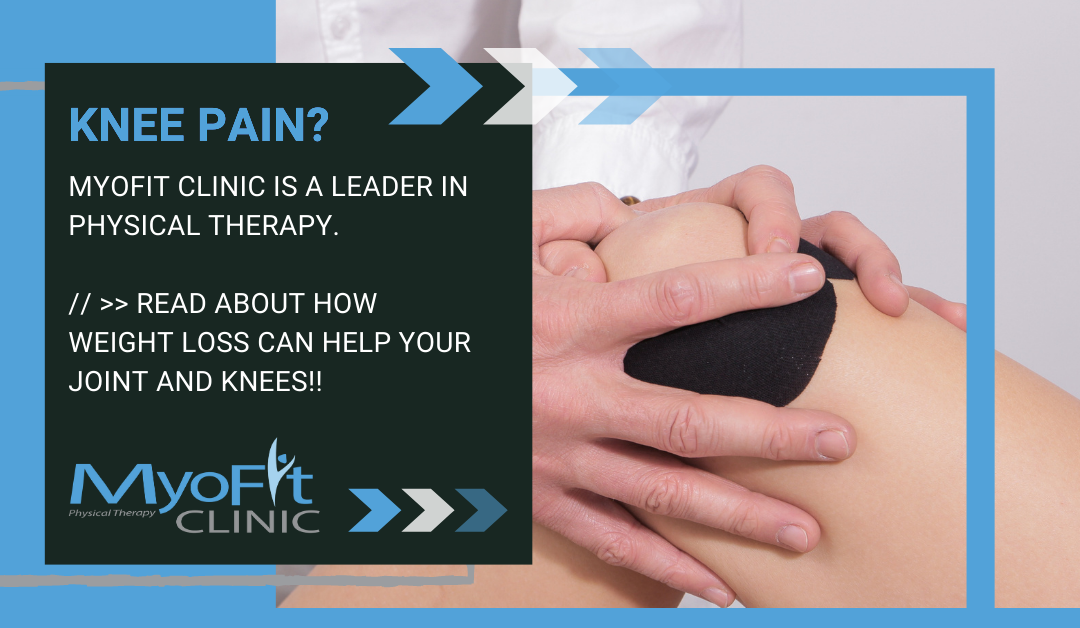- How can they be helped?
- The formula is simple, even though it is tough to achieve.
- They need to exercise and lose weight.
- Evidence-based research has consistently returned to this finding.
For example, a study headed by Dr. Stephen Messier1 at Wake Forest University in Winston-Salem, NC in 2013 and published in the Journal of the American Medical Association showed that when diet-induced weight loss was combined with exercise, participants who completed the study experienced a 51 percent reduction in pain on average.
The study involved 454 overweight and obese adults over an 18 month period. They were given a goal of losing at least 10 percent of their starting weight. Besides eating a nutritious diet, they had to exercise one hour three times a week. The average participant lost 23 pounds.
Patients who combined both diet and exercise had less joint pain than those who did one or the other.
“We are not certain why the combined diet and exercise intervention was superior to either diet or exercise alone,” Messier said. “It may be that there is a psycho-physiological effect of exercise on the central and peripheral nervous systems.”
He noted that most of the patients saw a marked improvement in pain and function in six months or less.
Based on the study, he concluded that “the best recommendation for long-term symptom reduction in overweight and obese persons with knee OA is intensive weight loss combined with low to moderate-intensity exercise.”
This study followed an earlier one in 2012 led by Nienke Paans2 involving 35 people who participated in an eight-month program of exercise in combination with weight loss. In that case, participation in the combination program resulted in a 32.6 percent improvement to self-reported physical function after eight months.
The researchers concluded that they now had preliminary evidence that this combination treatment is effective in people with hip OA.
Could exercise alone help? One 2002 study by Tufts University doctoral student Kristin Baker3 concluded that it could. Patients with joint pain participating in an exercise group had on average a 71 percent improvement in knee extension strength in the leg they had deemed the most painful. Self-reported pain and physical function improved by 30 percent and 38 percent respectively.
At our clinic, we continue to advocate for both weight reduction and regular exercise as a means of reducing joint pain. We know that extra weight heightens the risk of knee osteoarthritis. We also know that exercise strengthens the body.
The combination of losing weight and monitoring your diet is still the best way to start down the road to helping your aching knees. There are many ways to go about trying to accomplish this and it is easier said than done but it’s simple. Find the motivation, don’t lose sight of your goals, work smarter and not harder, and stay patient. High-intensity interval training and open-chain strengthening are to two easiest ways to accomplish weight loss and joint pain reduction and are actively practiced at MyoFit Clinic in order to achieve the desired results FAST!
Dr. Adam M Cramer, PT, DPT is a licensed doctor of physical therapy, owner of MyoFit Clinic in Chardon – Ashtabula – Middlefield, and is an avid health and fitness enthusiast. Please stop by the clinic for a consultation today!
Sources
- Messier, Stephen P. (2013) The Intensive Diet and Exercise for Arthritis Trial: 18-Month Clinical Outcomes. Journal of the American Medical Association. Sept. 24, 2013
- Paans, Nienke, Van den Akker-Scheek, Inge, Dilling, Roellien G., et al. Effects of Exercise and Weight Loss in People Who Have Hip Osteoarthritis and are Overweight or Obese: A Prospective Cohort Study. The Physical Therapy Journal, February 2013
- Baker, Kristin. 2002. Exercise those osteoarthritic knees. Tufts Journal. January 2002

